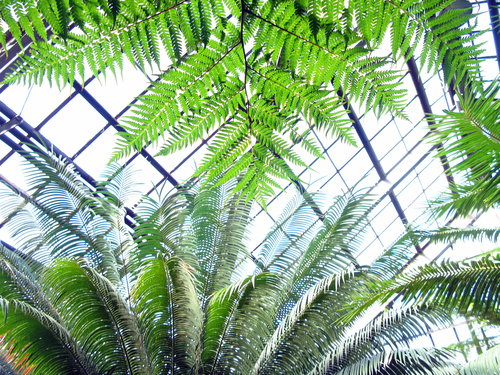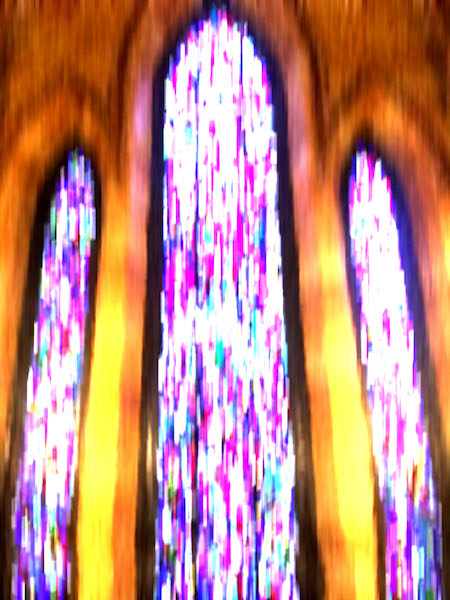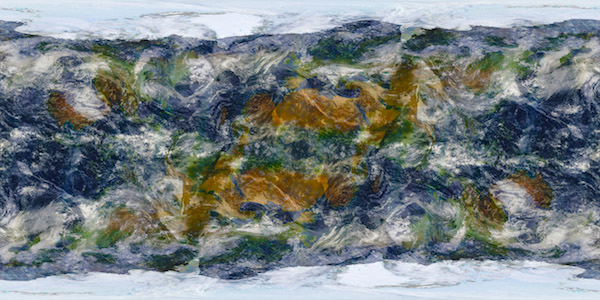



 |
 |
 |
 |
|
I'd like to share a few things with you: This is more or less my discography: Stephan Moore on Bandcamp Evidence on Bandcamp Treatments on Bandcamp VVV on Bandcamp I have by now released a number of projects on my bandcamp page for myself, to complement the teeming bandcamp page for Evidence. Recently, number of these releases have been made through the excellent Philadelphia-now-Chicago-based tape label Dead Definition. Check them out, they are great. And now here's some documentation of recent artworks, performances, etc. It gets less recent as you scroll down. Last Audience is a modular/mutable evening-length performance work by a canary torsi, which premiered at New York Live Arts in October 2019. It was an honoree of the Bessie Awards for Outstanding Production and Outstanding Original Sound Design/Composition. In each incarnation of the work, the audience becomes the central performers. This is a teaser reel for the piece. Later, Last Audience was transformed into a performance manual and an accompanying website, allowing the piece to continue to "tour" during the pandemic. Six Accompaniments for Solo Voice is a sound installation that was commissioned for The Chicago Sound Show at the University of Chicago in Fall 2019. In the University's Snell-Hitchcock Quadrangle, six benches are outfitted with speakers, each providing a different accompaniment for the ceaseless vocalization of the nearby Searle Chemistry Laboratory's ventilation system. Information about the full show including a digital catalog booklet is here. Chorus for Untrained Operator is a collaboration between Peter Bussigel and Stephan Moore. The piece is comprised of a collection of discarded quotidian objects. Each has been relieved of its original responsibilities, rewired, and transformed to emphasize its musical voice. The ensemble is controlled through the patchbay of a 1940s Western Electric switchboard. Chorus for Untrained Operator was created with support from Brown University, and developed at the Granoff Center for the Creative Arts in 2015-2016, where it premiered in March 2016.  A Grid Against The Sky aims to fill the interior volume of the Fern Room at Chicago's Lincoln Park Conservatory, organizing the air molecules into evolving cross-hatched patterns. These patterns are determined by the complex harmonics of a set of conjoined metal instruments called the Wall of Metals. Pre-recorded performances of the Wall are slowed down, reversed, and otherwise mixed and manipulated in real time, continuously. This project is a response to the harmonies and dissonances that hover in the balance between the room's architecture and its fragile, organic contents. This piece was commissioned by Chicago's Experimental Sound Studio for its long-running installation series Florasonic. It exhibited from December 10, 2017 to March 5, 2018. This recording was made during public hours, and contains the ambient sounds of the Fern Room along with the sounds of visitors.  Calling Up is a site-specific sound installation created for the sanctuary at the Church of the Ascension in Manhattan. Broadcast from hidden speakers, shifting vapors of sound swell and dissolve. These cloud-like textures are made up of tiny fragments of voices, expanded through layering and repetition, in a process that never repeats itself and is always gradually evolving. The vocal sounds are selected from recordings made by the award-winning vocal ensemble Voices of Ascension. All of the recordings used in this process feature the beautiful antiphon chants of 11th century poet, abbess, and composer Hildegard von Bingen. The installation is meant to provide a space for focused listening, contemplation, relief, or epiphany, as a complement to the powerful environment already present in the sanctuary. The work was created for the New York Electronic Arts Festival, and was shown from May 26 to July 14, 2017. The recording provided here was made with an ambisonic microphone to allow for a better sense of space. It was decoded to a binaural format, and will therefore sound best on headphones, though listening over normal loudspeakers will also work.  Toowoomba Looproom: Music of Transmission Damage consists of an audio signal that is repeatedly transmitted back and forth from the USA to Australia. Along the way, the sound is compressed, glitched, and otherwise mangled through the action of consumer-grade communication software. When the signal is completely blotted out, fresh audio is generated to replace it. This piece speaks to how the systems we trust to transmit information have the potential to recompose and transform the messages they convey. This piece was created at the invitation of RAYGUN Projects in Toowoomba, Queensland, Australia. The solo exhibition ran throughout the month of April 2017. The version of the piece included here would be played on two speakers, stacked vertically, the top one angled slightly to the right and the bottom one to the left. The track's left channel represents the Australian signal, and the right represents the US signal. Performance|Portrait is a creation of the performance collective A CANARY TORSI. This silent installation piece uses a Microsoft Kinect2 sensor to detect the presence of an interactant, and then manipulates one of four durational video performances (each one is four hours long) in response to observations it makes about the interactant's subtle, unconscious movements. Overt gestures are ignored. The piece raises questions about intimacy, attention, and the limits of interactive art. After being workshopped in a number of residencies, Performance|Portrait debuted on Dec 3, 2016. Details about the work can be found on the A CANARY TORSI website, and on the website of The Invisible Dog, the Brooklyn gallery where the work was shown in December 2016/January 2017. Diacousticon consists of a chorus of eight robotic instruments equipped with slide whistles and music boxes, listening to their environment and responding to it spontaneously. The instruments, whose ambiguous appearance may suggest weaponry or surveillance devices, are mounted around the structure of a dovecote atop a fountain surrounded by a garden. Diacousticon was exhibited as a part of In the Garden of Sonic Delights, an exhibition of sound art that I curated, which took place at six venues across New York's Westchester County from June 7 to November 2, 2014. View the website of the exhibition. View the online catalog of the exhibition. Filmmaker Caryn Waechter created documentation of the entire exhibition, below is her piece on Diacousticon. Sisyphus 2.0 is an aural puzzle game in the form of a kinetic sculpture. This 6-foot steel ball is equipped with speakers, a computer, and position sensors. In addition to the sound design, I contributed the audio hardware configuration and all programming and software design as well as the concept for the game. This piece was created in collaboration with the theater collective The Nerve Tank. This video documents a group interacting with the piece and eventually solving it, at the Sonic Delights Festival in July 2014. This interactive metal sphere was initially created to be the central set piece in the 2013 production of Glory Road, an original theatrical work created by NYC-based theater collective The Nerve Tank. Under the watchful eye of Persephone and a midtown Manhattan audience, Sisyphus attempts to solve a prohibitively difficult physical and sonic puzzle with the sculpture over and over again, a hellish task similar to endlessly rolling a boulder up a hill. HEATHER O is a dance video by A CANARY TORSI choreographed by my longtime collaborator Yanira Castro. I composed the score using a generative process in Max, borrowing the structure of the dance. I shot and edited the video with dancer Kimberly Young during a 2012 residency at Amherst College. Both the choreography and musical process from Heather O were exploded into a four-hour dance piece with live musicians and a interactive website, called The People To Come, which was performed over 20 times in 5 venues over the course of 2012-13. The website collected an archive of over 1000 submitted audience suggestions and hundreds of realizations of the musical score by over 50 musicians, all of which were used in the building of new iterations of the dance. The website is still active as an archive of the piece; its front page can be found here. An online score player, created in collaboration with Ben Taylor, can be found here. The aftermath of The People To Come's tour was included as a part of the Performance Archiving Performance show at the New Museum, and the score was featured in a concert there in December 2013. This video shows a brief excerpt of the piece as performed at The Invisible Dog in Brooklyn in July 2013. Evidence is my electronic music performance duo with composer/sound artist Scott Smallwood. We have been recording and performing together under the name Evidence since 2001, focusing on improvisation with custom software instruments, using field recordings and objects as sound sources. The entire catalog of released recordings by Evidence, including recordings released on the Deep Listening Catalog, can be streamed from our bandcamp page. Our 2019 album VGo Where Light Is is embedded here. An interview with Daniel Neumann about our 2013 album Visuals, which was conceived as both an album and an installation, is here. Losperus is a performance scenario by Evidence, with live video (when possible) by Jonathan Lee Marcus. Using small, durable microphones, we pick up and amplify the sounds produced by spontaneously-constructed kinetic sculptures built from typical household appliances and resonant objects. As a rule, the objects used must be collected from thrift stores located in the same city as the performance. This piece has been performed around the world, most recently at NIME 2016 in Brisbane. This video was recorded in Providence, RI on April 29, 2012. In Summary, is a piece for solo piano and laptop computer (the comma is part of the title). A Max patch listens to its surroundings continuously for a minimum of one hour. Then, when activated, the patch generates a six-minute composition that recapitulates the previous hour's sounds at 10x speed, compressing pitches and rhythms into an impromptu reduction. The notation is generated spontaneously and displayed on the screen for the pianist to sight-read. The notation is not saved, and each unique iteration of the score is lost upon completion. Pianist Jenny Lin has performed the piece on a number of occasions as a concert-closer or encore, as recently as February 2017. She performed In Summary, as the final piece of her concert at the 2014 Look and Listen festival in NYC, as documented in this video. To Go To Lvov was composed for the Providence String Quartet. The score is a transcription of pitches and rhythms extracted from a recording of my voice reading the poem "To Go To Lvov" by Polish poet Adam Zagajewski, as translated by Renata Gorczynski. The transcription algorithm was coded in Max. To Go To Lvov reflects on the idea and the actuality of one's hometown, in terms that are sentimental, existential, and mystical, and sometimes all three at once. It was premiered on December 13, 2010. View the score while listening to this recording. Moving Target is a piece for piano, computer, and six speakers. The pianist plays a series of quarter notes into a bank of evenly-spaced delays. Fluctuations in the performer's tempo result in shifting rhythmic patterns. Occasionally, the delays are also in motion. The piece was commissioned by pianist Michael Dauphinais in 2009. In this recording, it is performed by Barbara Lieurance at the 2014 Gilmore International Piano Festival. Below this point is a bunch of unsorted, older stuff, that I should probably go through and clean up. One of these days. A recording: An improvised set (approx. 26') by the quartet Volume(I): Shelley Burgon, Maria Chavez, Suzanne Thorpe and myself at the Whitebox Gallery in NYC, on June 13, 2010. Some images and recordings: From Outside Information, from my 2008 installation at the Mandeville Gallery, and from Magnetic North the performance piece made in collaboration with Chris Harvey and Kimberly Young. Documentation from some recent dance and theater pieces that I have scored, often with algorithmic or generative scores:
A video from the press: NY1's video news story on the 2009 Floating Points Festival at Issue Project Room. A recording: Contact with the Other (approx. 30') a solo performance from May 2007. Photo/Video documentation: from my EMPAC360 performance with Benton-C Bainbridge in September 2005. A video: An excerpt from Bridge by Evidence and Benton-C Bainbridge. Bridge is one of the 11 audio/video pieces featured on our Deep Listening DVD release Iris. Video documentation: from the installation Cumulosonus (in Quicktime format, 15.0 Mb). A photo: In the background is Mixmaster Mike of the Beastie Boys... In the foreground video artist Benton-C Bainbridge performs using two laptops to run Vidvox's Grid software (left) and my Scopemate software (right) custom-designed for their To The Five Boroughs tour. Video documentation: An early Hemisphere speaker performance time lapse, Low Ceiling and friends (68.4 Mb) from 2003. Eternal thanks, Madeleine, for helping with the documentation and everything else on this! More video documentation: An old sound installation, Maze Navigation (Etude #2 for Hemispherical Speaker Array) (21.8 Mb) from 2002. And one more recording: An untitled 24-minute solo performance from June 2004. |